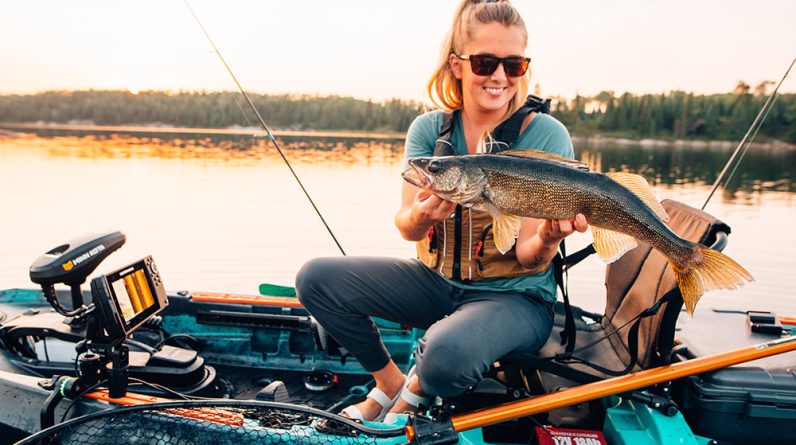
Maintaining your fishing kayak is crucial for ensuring optimal performance on the water. From regular cleaning to proper storage, taking care of your kayak will extend its lifespan and enhance your overall fishing experience. In this article, we will provide you with essential tips and tricks on how to effectively clean and maintain your fishing kayak, allowing you to enjoy smooth paddling and successful fishing trips. Whether you’re a seasoned angler or a beginner, these maintenance practices will help keep your kayak in top-notch condition.
Properly maintaining your fishing kayak for optimal performance
Owning a fishing kayak is a thrill and a joy, but it also comes with the responsibility of maintaining it for optimal performance and longevity. Regular cleaning, storage, and inspections are crucial to ensure that your kayak remains in top-notch condition. In this article, we will guide you through the step-by-step process of properly cleaning and maintaining your fishing kayak.
Regular Cleaning
Rinse the Kayak After Each Use
After every fishing trip, it is essential to rinse your kayak thoroughly. Use fresh water to remove any saltwater, sand, or debris that may have accumulated on the surface. The easiest way to do this is by using a garden hose. Ensure that you rinse both the top and bottom of the kayak to prevent any residue or build-up.
Scrubbing the Surface
Once the kayak has been rinsed, it’s time to give it a good scrub. Use a mild soap or kayak cleaner and a soft brush or sponge to gently scrub the surface. Be sure to pay attention to areas that may have grease or stubborn stains. Take care not to use any abrasive materials that could scratch the surface of your kayak.
Cleaning the Cockpit Area
The cockpit area is where you spend most of your time while fishing, so it’s crucial to keep it clean. Remove any dirt, sand, or debris that may have accumulated in this area. Use a kayak cockpit cleaner or a mild soap solution to clean the cockpit thoroughly. Rinse it with fresh water and wipe it dry with a soft cloth or towel.
Removing Stains and Residue
While cleaning your kayak, you may come across stubborn stains or residues that require extra attention. For tough stains, you can use a specialized kayak cleaner or a mixture of baking soda and water. Apply the solution to the stained area and scrub gently until the stain is removed. Rinse the area thoroughly to remove any traces of the cleaning solution.

This image is property of media.wired2fish.com.
Storage
Choosing the Right Storage Location
Finding the right storage location for your fishing kayak is essential for its overall maintenance. Whether you choose indoor or outdoor storage, it’s crucial to consider factors such as weather conditions and accessibility. Ideally, you should find a storage location that provides protection from direct sunlight, extreme temperatures, and potential damage from external elements.
Considerations for Indoor Storage
If you have the option of storing your fishing kayak indoors, it is highly recommended. Indoor storage provides protection from UV rays, rain, and other environmental factors that can cause damage over time. When storing your kayak indoors, ensure that there is enough space to accommodate its size without any risk of it being bumped or damaged.
Preparing for Long-Term Storage
If you plan on storing your fishing kayak for an extended period, there are a few additional steps to take. Thoroughly clean and dry your kayak before storing it to prevent the growth of mold and mildew. Apply a UV protectant to the surface to shield it from any potential damage caused by exposure to sunlight. Finally, cover your kayak with a quality kayak cover to provide an extra layer of protection during storage.
Inspecting for Damages
Hull Inspection
Regularly inspecting the hull of your fishing kayak is crucial to identify any potential damage or wear. Carefully examine the entire hull, including the bottom and sides, for signs of cracks, dents, or impact damage. Take note of any areas that require repair or further attention.
Checking for Cracks or Gouges
Cracks and gouges in the kayak’s hull can compromise its structural integrity. Using a flashlight, inspect for any hairline cracks or larger gaps that may need immediate attention. It is essential to address these issues promptly to prevent further damage and potential leaks.
Inspecting the Rigging and Hardware
The rigging and hardware on your fishing kayak play a significant role in its functionality. Regularly inspect the rigging, including bungee cords, hatch covers, and any other attachments. Check for signs of wear, fraying, or loose connections. Ensure that all hardware, such as screws or bolts, is secure and functioning correctly.
Evaluating the Seat and Foot Braces
The comfort and safety of your fishing kayak depend greatly on the condition of the seat and foot braces. Inspect the seat for any tears, loose attachments, or signs of wear. Check the foot braces for proper adjustment and ensure they are securely in place. If any issues are found, address them promptly to maintain optimal comfort while on the water.
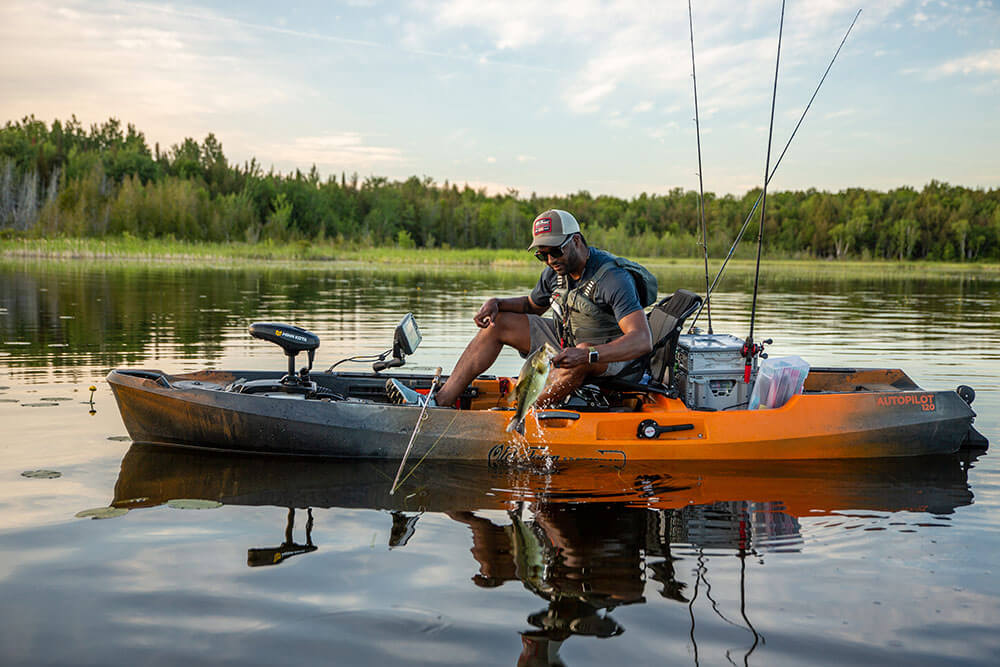
This image is property of oldtownwatercraft.johnsonoutdoors.com.
Maintaining the Hull
Repairing Minor Hull Damage
If you come across minor hull damage during your inspections, it’s essential to repair it promptly. Small cracks or gouges can be repaired using specialized kayak repair kits. Follow the instructions provided with the kit and ensure that you apply the repair material securely and evenly. Allow the repair to cure fully before using your kayak.
Filling in Gouges and Scratches
Gouges and scratches on the kayak’s hull may not require extensive repair but should be addressed to prevent further damage. Use marine-grade epoxy putty or filler to fill in any gouges or scratches. The putty should be applied evenly and allowed to cure before sanding and smoothing the repaired area.
Applying UV Protectant
UV rays can cause significant damage to your fishing kayak over time. Applying a high-quality UV protectant to the hull will help shield it from the harmful effects of the sun. Choose a protectant specifically formulated for kayaks and follow the instructions for application. Regularly reapply the protectant as needed.
Regularly Checking for Leaks
It’s crucial to regularly check your fishing kayak for any signs of leaks. Fill the cockpit area with a small amount of water and observe if any water seeps through the hull. If leaks are detected, mark the area and consult with a professional for repairs. Addressing leaks promptly will prevent further damage and maintain the safety of your kayak.
Maintaining the Kayak’s Components
Inspecting and Lubricating the Hatches
The hatches on your fishing kayak are essential for storing gear and keeping it secure. Regularly inspect the hatch covers for any signs of wear or damage. Lubricate the hinges and seals with a silicone-based lubricant to ensure they function properly and remain watertight.
Maintaining the Rudder System
If your fishing kayak is equipped with a rudder system, it’s essential to maintain it properly. Inspect the rudder for any signs of damage or wear, such as loose attachments or bent parts. Lubricate the moving parts with a silicone-based lubricant and ensure that the cables are properly tensioned and functioning smoothly.
Checking and Replacing Paddles
The paddle is an integral part of your fishing kayak, and regular inspection is necessary for its proper functioning. Check the paddle shaft and blades for any cracks, chips, or signs of wear. Ensure that the paddle is securely attached to the kayak and the paddle grips are comfortable. If any issues are found, consider replacing the paddle to maintain optimal performance.
Maintaining the Fishing Rod Holders
Fishing rod holders are essential for anglers, and their proper maintenance is crucial. Inspect the rod holders for any damage or signs of wear, such as loose attachments or cracked bases. Lubricate any moving parts with a silicone-based lubricant to ensure smooth operation. Regularly clean the rod holders and remove any debris or fishing line that may have become tangled.
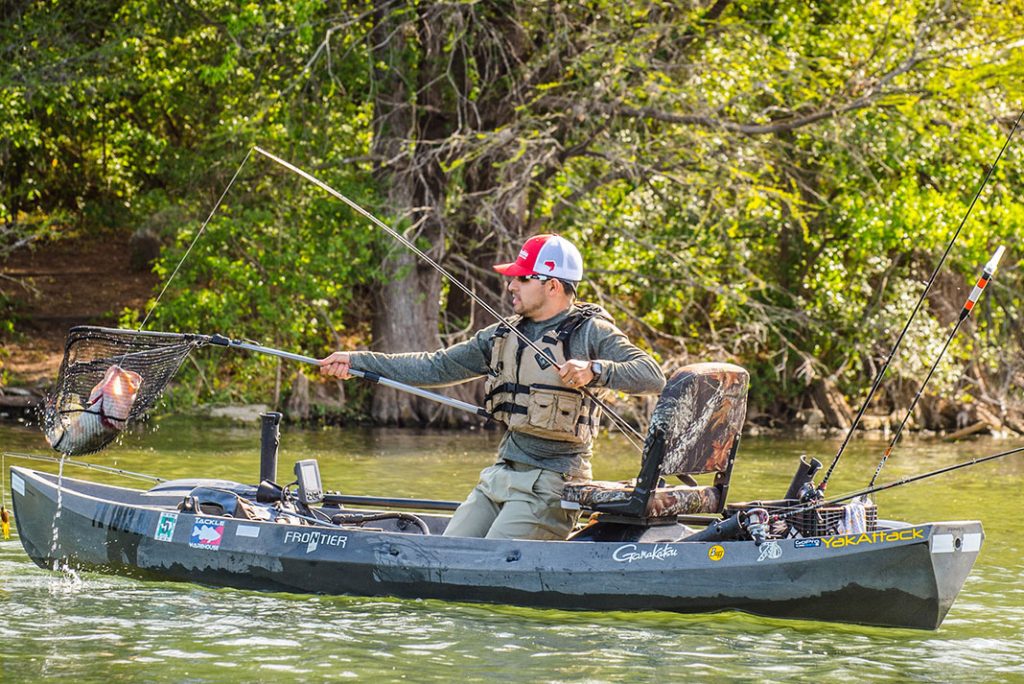
This image is property of kayakanglermag.com.
Keeping the Kayak Dry
Using a Kayak Cover
Using a kayak cover is an excellent way to protect your fishing kayak from the elements and keep it dry. Choose a cover that fits your kayak properly and provides complete coverage. A quality kayak cover will prevent water, dust, and debris from accumulating on the surface and help maintain its overall condition.
Draining Any Accumulated Water
After each use, it’s crucial to drain any accumulated water from your kayak. Tilt the kayak slightly to allow any water to flow out through the scupper holes or drain plugs. Using a sponge or towel, remove any remaining moisture from the cockpit and other areas to prevent the growth of mold or mildew.
Using Dry Bags for Gear
To keep your gear dry while out on the water, invest in high-quality dry bags. These bags are designed to keep your belongings dry, even if they accidentally end up in the water. Place your valuable items and electronics in the dry bags before storing them in the compartments or hatches of your fishing kayak.
Utilizing Bilge Pumps
In case water does enter your kayak, having a bilge pump on hand is essential. A bilge pump allows you to quickly and efficiently remove water from the cockpit area, ensuring that your kayak remains dry. Familiarize yourself with the operation of the pump and ensure it is in proper working condition before heading out on the water.
Electronics and Battery Maintenance
Protecting Electronics from Water
If you have electronics such as fish finders or GPS devices installed on your fishing kayak, it’s crucial to protect them from water. Ensure that all electrical connections are properly sealed and use waterproof covers or cases for your electronics when necessary. Avoid submerging your kayak with electronics in water to prevent any potential damage.
Properly Storing and Charging Batteries
Maintaining the batteries for your electronics is just as important as protecting the devices themselves. Store your batteries in a dry, cool location and avoid extreme temperatures. Regularly check and charge your batteries as recommended by the manufacturer to ensure they are ready for your fishing adventures.
Checking Wiring and Connections
To maintain the functionality of your electronics, it’s important to regularly check the wiring and connections. Look for any loose or corroded connections and ensure that all wires are properly insulated and secured. If you notice any issues, consult a professional or follow the manufacturer’s guidelines for troubleshooting and repairs.
Cleaning Electronics and Screens
Dirt, saltwater, and other debris can accumulate on your electronics and screens, affecting their visibility and performance. Use a soft, lint-free cloth or microfiber cloth to gently clean the surfaces. Avoid using harsh chemicals or abrasive materials that could damage the screens. Regular cleaning will help maintain optimal functionality and extend the lifespan of your electronics.
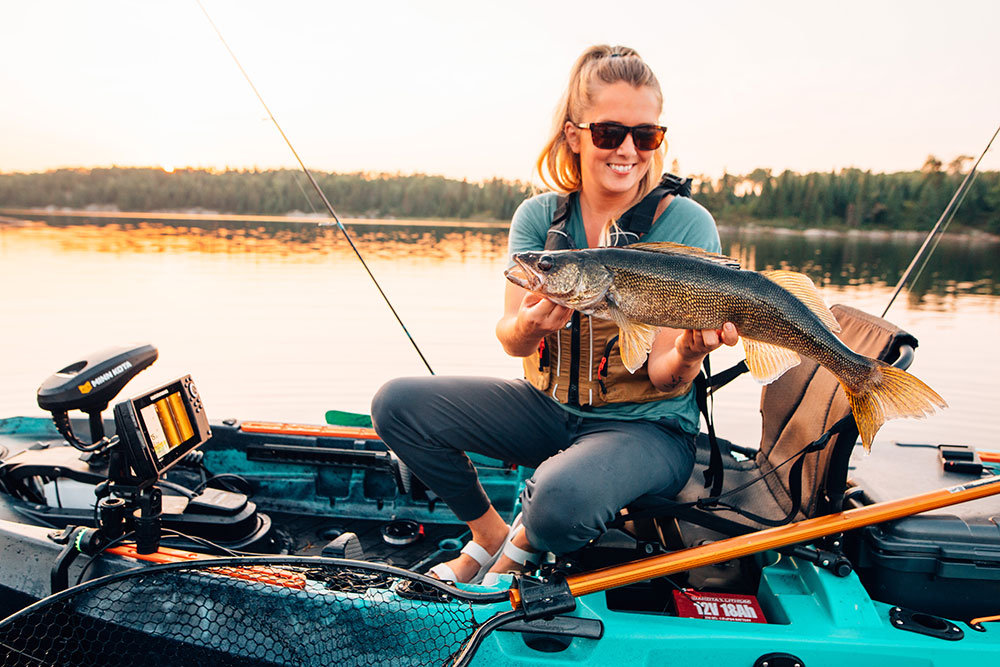
This image is property of oldtownwatercraft.johnsonoutdoors.com.
Paddle Maintenance
Cleaning and Drying the Paddle
Proper maintenance of your paddle is essential for optimal performance and longevity. After each use, rinse the paddle with freshwater to remove any saltwater or debris. Wipe it dry with a cloth or towel to prevent moisture from causing damage. Store your paddle in a dry and secure location to avoid any potential damage or misplacement.
Checking for Wear or Damage
Regularly inspect your paddle for any signs of wear or damage. Look for cracks or chips in the paddle shaft and check that the blades are securely attached. Ensure that the paddle length is appropriate for your height and paddling style. If any issues are found, consider replacing the paddle to maintain optimal performance.
Replacing Worn Grips or Paddle Heads
The grips on your paddle can wear out over time, affecting your comfort and grip. Inspect the grips for any signs of wear or deterioration and replace them if necessary. Additionally, if the paddle heads show signs of damage or are no longer functioning properly, consider replacing them to maintain efficient paddling.
Safety Gear Maintenance
Inspecting Life Jackets and PFDs
Safety should always be a top priority when out on the water, and maintaining your life jackets and personal flotation devices (PFDs) is crucial. Regularly inspect them for any signs of wear, such as tears or loose straps. Ensure that all buckles and zippers are functioning correctly. If any issues are found, repair or replace them to ensure your safety while kayaking.
Maintaining First Aid Kits
A properly stocked and maintained first aid kit is essential for any outdoor activity, including kayak fishing. Regularly check the contents of your first aid kit and ensure that all items are in good condition and have not expired. Restock any items that are missing or running low to ensure you are prepared for any potential emergencies.
Checking and Replacing Flares
Flares are an important signaling device in case of emergency situations. Check the expiration dates on your flares regularly and replace them as needed. Ensure that they are properly stored and easily accessible in case of an emergency. Familiarize yourself with the proper use of flares and follow all safety guidelines.
Inspecting Communication Devices
If you carry communication devices such as a VHF radio or mobile phone while kayaking, it’s important to inspect them regularly. Ensure that the devices are fully charged and in proper working condition. Check for any signs of damage, and if necessary, consult a professional for repairs or replacements.
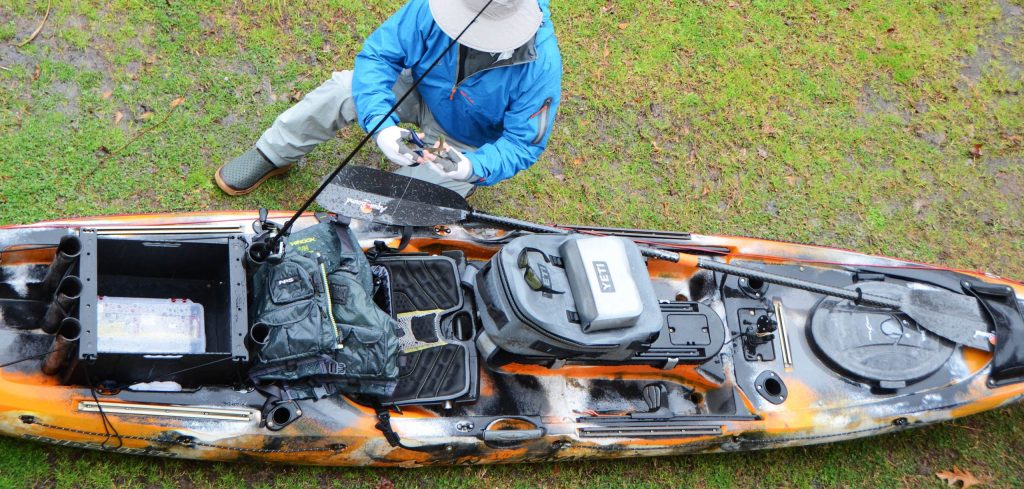
This image is property of paddlingmagazine-images.s3.amazonaws.com.
Maintenance Schedule
Creating a Maintenance Checklist
To stay organized and ensure that you don’t overlook any maintenance tasks, create a comprehensive maintenance checklist for your fishing kayak. Include all the cleaning, inspection, and maintenance tasks detailed in this article, as well as any specific tasks recommended by the kayak manufacturer. Having a checklist will help you establish a routine and ensure that your kayak receives the care it needs.
Establishing Regular Maintenance Intervals
Establishing regular maintenance intervals is crucial to keep your kayak in top-notch condition throughout the year. Determine the frequency at which each task should be performed, considering factors such as usage, weather conditions, and storage. Whether it’s weekly, monthly, or annually, sticking to a maintenance schedule will help you avoid potential issues and prolong the lifespan of your fishing kayak.
Recording and Tracking Maintenance
Keeping a record of all maintenance tasks performed on your fishing kayak is beneficial for several reasons. It allows you to track the date and details of each maintenance task, ensuring that you don’t miss any important steps. It also provides a reference point for future inspections and helps identify any recurring issues or patterns. Use a notebook, spreadsheet, or digital app to record and track your kayak’s maintenance history.
Properly cleaning and maintaining your fishing kayak is not only necessary for its optimal performance but also for your safety and enjoyment on the water. By following the steps outlined in this article and establishing a regular maintenance routine, you can ensure that your kayak remains in excellent condition for years to come. Don’t neglect the care of your kayak, and it will reward you with countless unforgettable fishing adventures.






